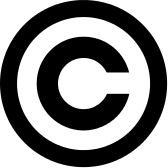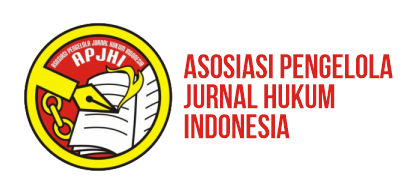Menakar Perlindungan Justice Colaborator
DOI:
https://doi.org/10.31078/jk1329Keywords:
Quo Vadis, Justice Collaborator, Constitutional CourtAbstract
Corruption is one form of systematic organized crimes performed with complicated modus operandi. Disclosing of this crime, in addition to requiring special equipment, also needs a certain method. One of the methods is using actors who collaborate or justice collaborator. The provisions on justice collaboratororiginally referred to Article 10 paragraph (2) of Law No. 13 of 2006 on Protection of Witnesses and Victims –but there are indications that these provisions do not provide protection to the justice collaborator. Because even though he plays as a collaborating actor, it does not result in a loss of authority of the state to prosecute the concerned. This provision is considered violating the principle of lex certain criminal law, for its ambiguity and multiple interpretations. Constitutional Court in its decision No. 42/PUU-VIII/2010states that Article 10 paragraph (2) regarding a quoprovision is not contrary to the 1945 Constitution. Without realizing it, Constitutional Court has come affirming the lack of protection on the collaborating actors. The fate of justice collaboratorthen finds the clarity in Article 10 paragraph (1) of Law No. 31 of 2014 on Protection on Witnesses and Victims. In the future, with reference to a quo provision, there is no guarantee to the justice collaboratorthat he would not be prosecuted either criminal or civil, except for statements or testimony that is not done in good faith. Besides regulated under legislation of Witnesses and Victims Protection, protection of the justice collaboratorhas also been set in UNTOC 2000 and UNCAC 2003.
References
Background Paper Declaration of 8 International Confrence Against Corruption di Lima Peru pada tanggal 7-11 September 1997.
Danny Leipziger, National Asset in The World, http://www.balipost.co.id/balipostcetak/, diakses tanggal 30 Januari 2008.
Eddy O.S Hiariej, Korupsi Partai Politik, KOMPAS, 3 Agustus 2011.
Eddy O.S Hiariej, Pengantar Hukum Pidana Internasional, Jakarta: Erlangga, 2009, h. 47.
Eddy OS. Hiariej, Pembuktian Terbalik Dalam Pengembalian Aset Kejahatan Korupsi, Pidato Pengukuhan Guru Besar pada Fakultas Hukum UGM: Yogyakarta, 30 Januari 2012.
Frank E. Hagan, 2010, Introduction to Criminology: Theories, Methods, and Criminal Behavior, Los Angeles: Sage Publication.
George E. Rush, 2003, The Dictionary of Criminal Justice (Sixth Edition), New York:McGraw-Hill.
Giriraj Shah, 2002, White Collar Crime, New Delhi: Anmol Publication PVT. Ltd.
J.A. Pontier, Rechtsvinding, Penerjemah B. Arief Sidharta, Bandung: Jendela Mas Pustaka, 2008, h. 59.
J.E. Sahetapy, Kejahatan Gotong Royong, Diskusi Panel Fakultas Hukum UGM, Yogyakarta, 22 November 1997.
Jan Remmelink, 2003, Hukum Pidana : Komentar Atas Pasal-Pasal Terpenting Dalam Kitab Undang-Undang Hukum Pidana Belanda Dan Padanannya Dalam Kitab Undang-Undang Hukum Pidana Indonesia, Jakarta: Gramedia Pustaka Utama,
John E. Ferguson, Jr, 2010, White-Collar Crime, London: Chelsea House Publisher.
Jurnal Data Pencegahan dan Pemberantasan Penyalahgunaan dan Peredaran Gelap Narkoba (P4GN) Tahun 2013, Edisi Tahun 2014, h. 2.
Lawrence M. Salinger, 2005, Encyclopedia of White Collar and Corporate Crime (Vol 1 & 2), London: Sage Publications.
M. Cherif Basiouni, 2003, Introduction to International Criminal Law, New York: Transnasional Publisher, Inc.Ardsley.
Mangai Natarajan, 2011, International Crime and Justice, London: Cambridge University Press.
Marjono Reksodiputro, 2012, Pembocor Rahasia/Whistleblower dan Penyadapan (Wiretapping, Electronic Intercepttion) Dalam Menanggulangi Kejahatan di Indonesia, Jakarta: Wacana Goverminyboard
Novianti, Tinjauan Yuridis Perdagangan Manusia Sebagai Kejahatan Lintas Batas
Negara, Jurnal Ilmu Hukum Fakultas Hukum Jambi, Volume 1, Edisi 2014, h. 56.
P. Reuter and C. Petrie, (Editor), 1999, Transnational Organized Crime: Summary of a Workshop, Whasington DC: National Academies Press.
Philip Reichel and Jay Albanese (Editor), 2014, Handbook of Transnational Crime and Justice, Los Angeles: Sage Publication.
Quentin Dempster, 2001, Whistleblowers, Sydney: Australian Broadcasting Corporation.
Romli Atmasasmita, 2008, Perkembangan Hukum Pidana Dalam Era Globalisasi, Jakarta: Perum Percetakan Negera RI.
Saldi Isra dan Eddy OS Hiariej, Perspektif Hukum Pemberantasan Korupsi di Indonesia, dalam Wijayantodan Ridwan Zachrie(Editor), 2009, Korupsi Mengorupsi Indonesia: Sebab, Akibat dan Prospek Pemberantasan, Jakarta: PT Garmedia Pustaka Utama.
Sally S. Simpson, 2005, Corporate Crime, Law, and Social Control, New York-Melbourne: Cambridge University Press.
Sudikno Mertokusumo dan Mr. A. Pitlo, 2013, Bab-Bab Tentang Penemuan Hukum, Bandung: PT Citra Aditya Bakti.
Sudikno Mertokusumo, 2001, Penemuan Hukum Sebuah Pengantar, Yogyakarta: Liberty.
Survei IPK Indonesia, http://www.ti.or.id/index.php/publication/category/survey, diakses tanggal 6 November 2015.
United Nations Office on Drugs and Crime, Good Practice for The Protection of Witnessess in Criminal Proceedings Involving Organized Crime – UNODC 2008.
William J. Chamblis dan Aida Y. Hass, 2012, Criminology: Connecting Theory, Research & Practice, New York: McGraw-Hill.
Yenti Ganarsih, Penerapan Undang-Undang No. 15 Tahun 2003 tentang Tindak Pidana Pencucian Uang, Seminar Pemahaman Undang-Undang No. 15 Tahun 2003 tentang Tindak Pidana Pencucian Uang, Yogyakarta, 1 September 2004.
Downloads
How to Cite
Issue
Section
License
Authors who publish with this journal agree to the following terms:
- Copyright of the published articles will be transferred to the journal as the publisher of the manuscripts. Therefore, the author confirms that the copyright has been managed by the publisher.
- The publisher of Jurnal Konstitusi is The Registrar and Secretariat General of the Constitutional Court of the Republic of Indonesia.
- The copyright follows Creative Commons Attribution-NonCommercial-ShareAlike 4.0 International License: This license allows reusers to distribute, remix, adapt, and build upon the material in any medium or format for noncommercial purposes only, and only so long as attribution is given to the creator. If you remix, adapt, or build upon the material, you must license the modified material under identical terms.

















